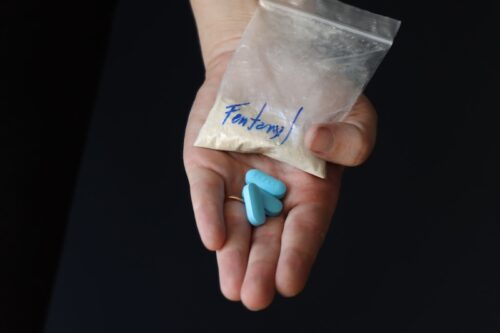Home » Engage Those Infants: Maternal Interaction and Autism
Engage Those Infants: Maternal Interaction and Autism
November 21, 2019
From The Carlat Child Psychiatry Report
Pavan Madan, MD
Dr. Madan has disclosed that he has no relevant financial or other interests in any commercial companies pertaining to this educational activity.
REVIEW OF: Schwichtenberg AJ et al, Autism 2019;23(4):821–833
Mother-infant interactions are a cornerstone of early development, supporting social and language development of children with or without autism spectrum disorder (ASD). Research on the impact of maternal behaviors on these interactions offers helpful guidance in clinical work with infants with ASD.
This study looked at the interactions between mothers and infants in families where at least one other child in the family had ASD. These infants are considered to have high risk for ASD. It was a prospective study, having partners rate the mothers using a well-standardized instrument, the Social Responsiveness Scale (SRS), and having trained coders rate videotaped interactions of mothers with the infant. The control group consisted of mothers and infants with no family history of ASD. These control infants are considered to be at low risk for having ASD.
The SRS differentiates well between typically developing (TD), at-risk, and ASD populations. And for the video measure, maternal social behavior in context (during play) was assessed by looking at face, vocalization, and positive affect.
All of the infants were assessed using a common autism instrument, the Autism Diagnostic Observation Scale (ADOS), at 36 months of age and classified as ASD, TD, or non-TD.
In both the high- and low-risk infants, mothers had similar responsiveness, not significantly different (p = 0.40), both falling within normal range of reciprocal social behavior (t-scores < 60). These findings held at 6, 9, and 12 months of age. Mothers in the high-risk group used slightly fewer responses than the low-risk group at 9 and 12 months, but these differences were neither statistically nor clinically significant—although in both groups, mothers with boys and mothers from higher-income families tended to talk more to their babies.
On the ADOS, all the infants increased their frequency of social behavior responses to their mothers over time, which was good news.
And here’s the key finding: In both groups, when mothers had positive emotional tone and tried to find more ways to connect with their children, the infants also had more positive emotions, vocalized more, looked at their mothers more, responded more, and very importantly, initiated more interactions. This pattern was most consistent when infants were 12 months of age.
CCPR’s Take
This study has several clinically relevant findings. The severity of an infant’s difficulties did not dissuade the mother’s efforts to communicate, infants generally improved with time, and mothers’ positive affect and efforts to engage and interact were associated with improved social communication in their infants no matter the severity of the condition. These findings underline the importance of encouraging mothers to persist in attempting to engage infants with autism and related challenges—their efforts are likely to bear fruit.
Child PsychiatryMother-infant interactions are a cornerstone of early development, supporting social and language development of children with or without autism spectrum disorder (ASD). Research on the impact of maternal behaviors on these interactions offers helpful guidance in clinical work with infants with ASD.
This study looked at the interactions between mothers and infants in families where at least one other child in the family had ASD. These infants are considered to have high risk for ASD. It was a prospective study, having partners rate the mothers using a well-standardized instrument, the Social Responsiveness Scale (SRS), and having trained coders rate videotaped interactions of mothers with the infant. The control group consisted of mothers and infants with no family history of ASD. These control infants are considered to be at low risk for having ASD.
The SRS differentiates well between typically developing (TD), at-risk, and ASD populations. And for the video measure, maternal social behavior in context (during play) was assessed by looking at face, vocalization, and positive affect.
All of the infants were assessed using a common autism instrument, the Autism Diagnostic Observation Scale (ADOS), at 36 months of age and classified as ASD, TD, or non-TD.
In both the high- and low-risk infants, mothers had similar responsiveness, not significantly different (p = 0.40), both falling within normal range of reciprocal social behavior (t-scores < 60). These findings held at 6, 9, and 12 months of age. Mothers in the high-risk group used slightly fewer responses than the low-risk group at 9 and 12 months, but these differences were neither statistically nor clinically significant—although in both groups, mothers with boys and mothers from higher-income families tended to talk more to their babies.
On the ADOS, all the infants increased their frequency of social behavior responses to their mothers over time, which was good news.
And here’s the key finding: In both groups, when mothers had positive emotional tone and tried to find more ways to connect with their children, the infants also had more positive emotions, vocalized more, looked at their mothers more, responded more, and very importantly, initiated more interactions. This pattern was most consistent when infants were 12 months of age.
CCPR’s Take
This study has several clinically relevant findings. The severity of an infant’s difficulties did not dissuade the mother’s efforts to communicate, infants generally improved with time, and mothers’ positive affect and efforts to engage and interact were associated with improved social communication in their infants no matter the severity of the condition. These findings underline the importance of encouraging mothers to persist in attempting to engage infants with autism and related challenges—their efforts are likely to bear fruit.
Issue Date: November 21, 2019
Table Of Contents
Recommended
Newsletters
Please see our Terms and Conditions, Privacy Policy, Subscription Agreement, Use of Cookies, and Hardware/Software Requirements to view our website.
© 2025 Carlat Publishing, LLC and Affiliates, All Rights Reserved.


_-The-Breakthrough-Antipsychotic-That-Could-Change-Everything.jpg?1729528747)



